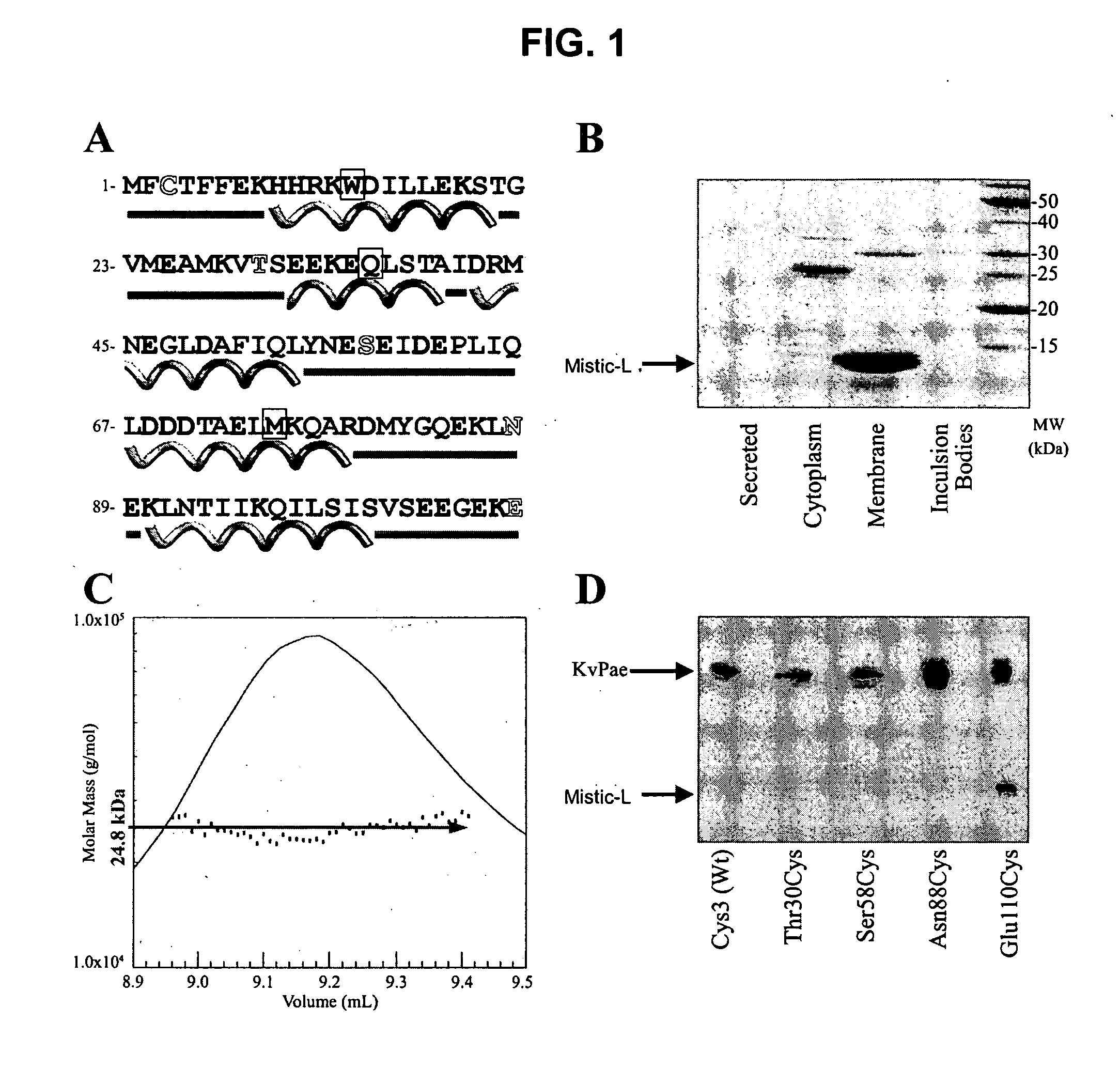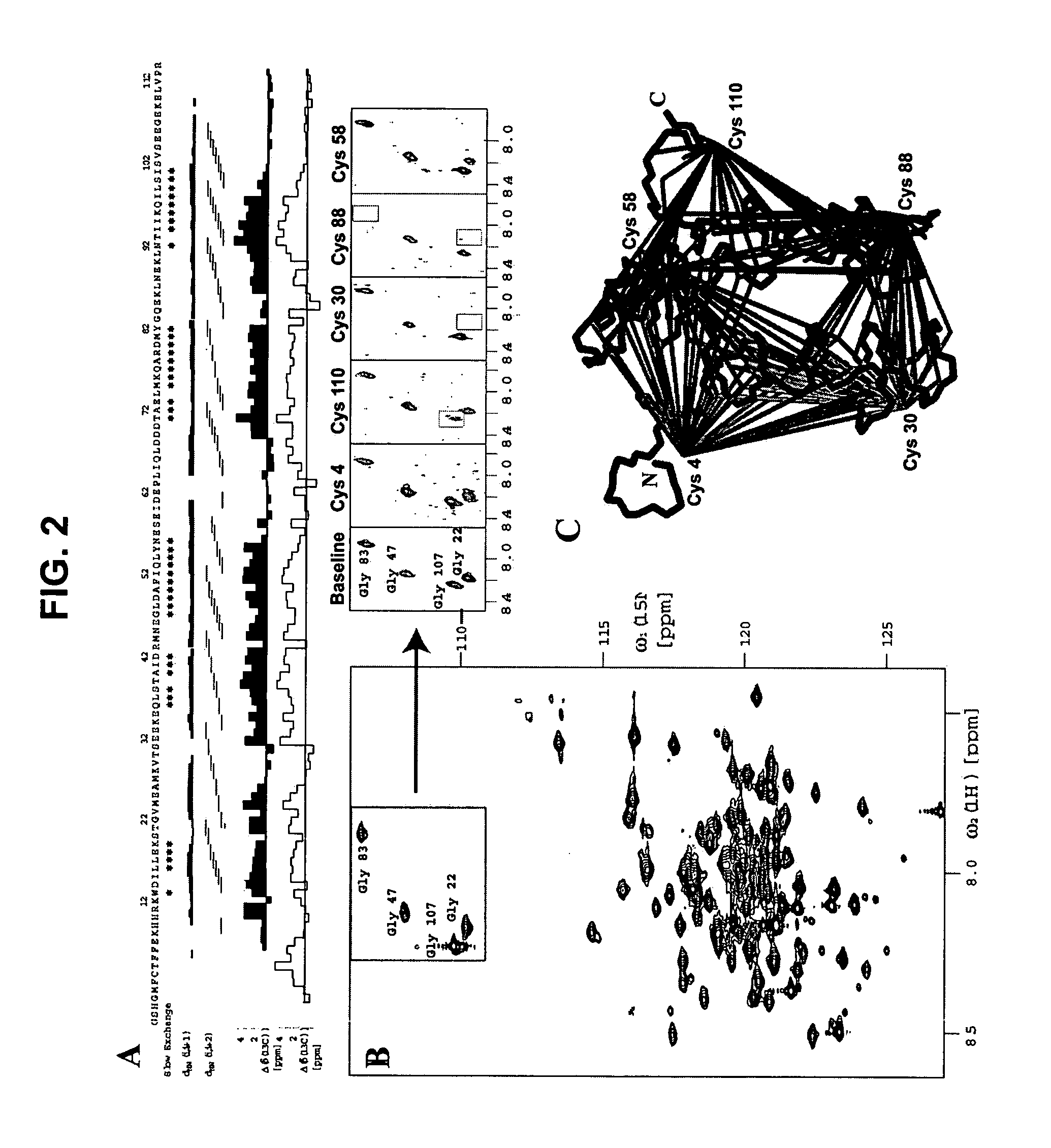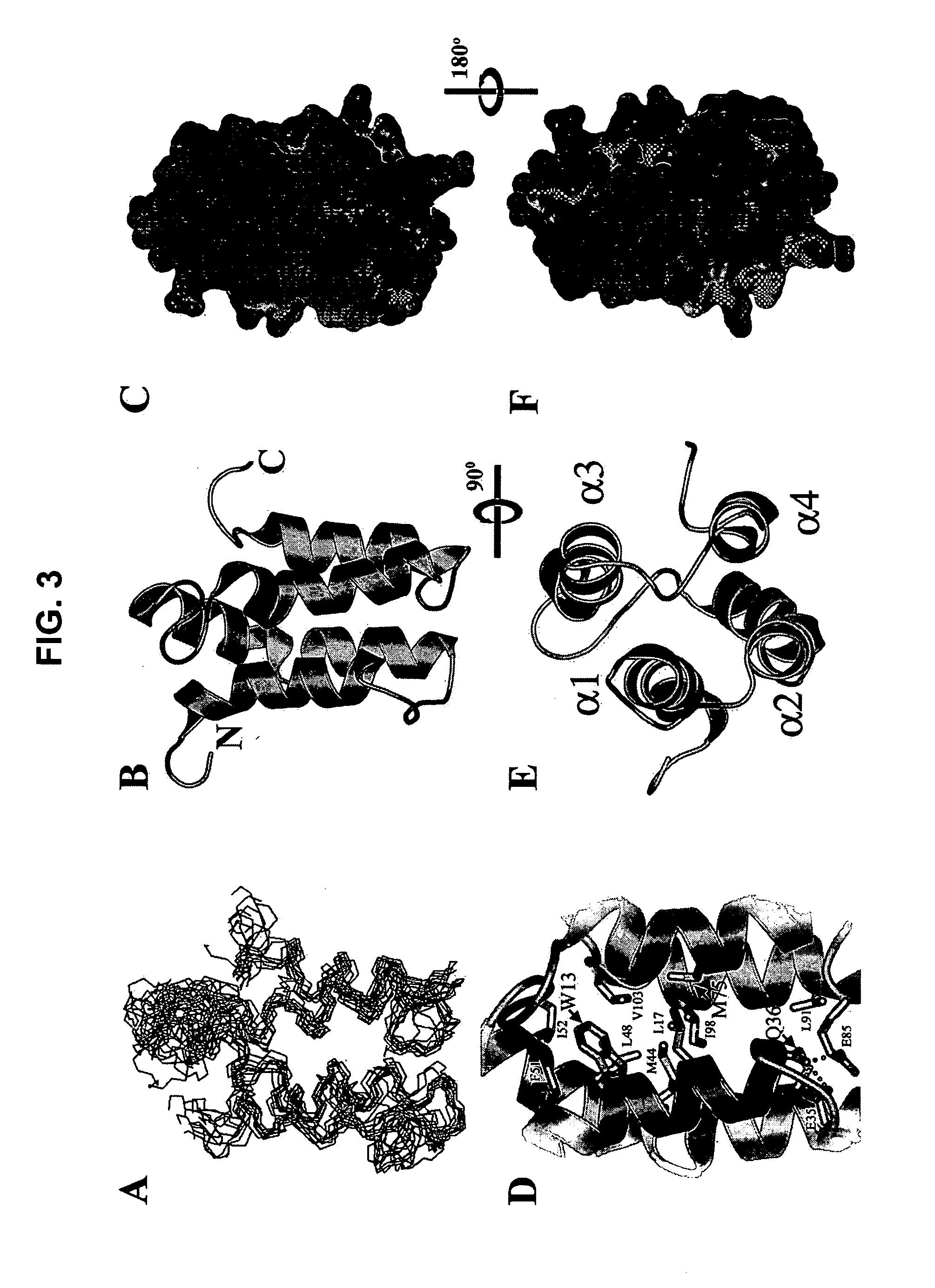Compositions and methods for producing recombinant proteins
a technology of recombinant proteins and recombinant proteins, applied in the field of membrane-associated proteins, can solve the problems of limited success rate, difficulty in applying this platform to im proteins, and prohibitive practicability and/or cost-effective expression of recombinant proteins in large amounts to allow subsequent characterization and evaluation
- Summary
- Abstract
- Description
- Claims
- Application Information
AI Technical Summary
Benefits of technology
Problems solved by technology
Method used
Image
Examples
example 1
Isolation of Mistic-L, a Self-Integrating Integral Membrane Protein
[0374] This example describes the isolation of a Mistic-L-encoding nucleic acid sequence and the expression of the corresponding protein. Characterization of the Mistic-L primary sequence and its oligomerization state in the presence of detergent are also described. The provision of this and other Mistic polypeptide-encoding nucleic acids, at least, enables the construction of Mistic polypeptide-encoding nucleic acid and Mistic polypeptide variants using standard molecular techniques and the expression of Mistic polypeptides and their variants in a variety of host cells, as is now common practice. The example further emphasizes the unique properties of a representative Mistic polypeptide and the clear association of members of this class of polypeptides with membranes and membrane-like structures (such as micelles or liposomes).
A. Isolation of Mistic-L-Encoding Nucleic Acid Sequence
[0375] A nucleic acid sequence ...
example 2
Mistic-L Mutants Reveal the Orientation of Mistic-L in the Membrane
[0384] This example demonstrates the orientation (also referred to as topology) of a representative Mistic polypeptide in a cell membrane model using a panel of mono-cysteine Mistic-L mutants. Among other things, these mutants define Mistic-L residues that can be modified without appreciable effect on Mistic-L membrane-associating function. From information provided herein, the corresponding residues of other Mistic polypeptides (e.g., M1, M2, M3 or M4) can be readily determined.
[0385] Mistic-L topology studies were conducted with a Mistic-L fusion to a bacterial 6TM potassium channel from Pseudomonas aeruginosa (KvPae) (GenBank Accession No. NP—250187). The KvPae channel, which was substantially identical in all constructs, served as an internal control for calibrating expression, extraction, biotinylation and detection efficiency between the samples. Mistic-L-KvPae fusion constructs were created by subcloning KvP...
example 4
Proteins Fused to Mistic-L are Targeted to the Membrane
[0402] This example demonstrates that Mistic-L targets (i.e., cargoes or traffics) a variety of other proteins to which it is fused to a cell membrane. When fused to Mistic-L's C-terminus, a fusion partner protein (also referred to as a “cargo protein”) readily folds into its native, lipid bilayer-inserted conformation, apparently (though not necessarily) bypassing E. coli translocon and chaperone apparatus. Accordingly, Mistic-L fusion proteins provide, among other things, useful methods of producing and isolating Mistic-L fusion partners.
[0403] Mistic-L was subcloned along with the promoter and affinity tag into pET-15b (Novagen) (see, e.g., Examples 1 and 2) or Gateway™ destination (Invitrogen) vectors (in accordance with manufacturer's directions) for expression studies of Mistic-L-eukaryotic IM protein fusions. Mistic-L-assisted expression was determined for three topologically and structurally distinct classes of eukaryo...
PUM
| Property | Measurement | Unit |
|---|---|---|
| Fraction | aaaaa | aaaaa |
| Fraction | aaaaa | aaaaa |
| Fraction | aaaaa | aaaaa |
Abstract
Description
Claims
Application Information
 Login to View More
Login to View More - R&D
- Intellectual Property
- Life Sciences
- Materials
- Tech Scout
- Unparalleled Data Quality
- Higher Quality Content
- 60% Fewer Hallucinations
Browse by: Latest US Patents, China's latest patents, Technical Efficacy Thesaurus, Application Domain, Technology Topic, Popular Technical Reports.
© 2025 PatSnap. All rights reserved.Legal|Privacy policy|Modern Slavery Act Transparency Statement|Sitemap|About US| Contact US: help@patsnap.com



